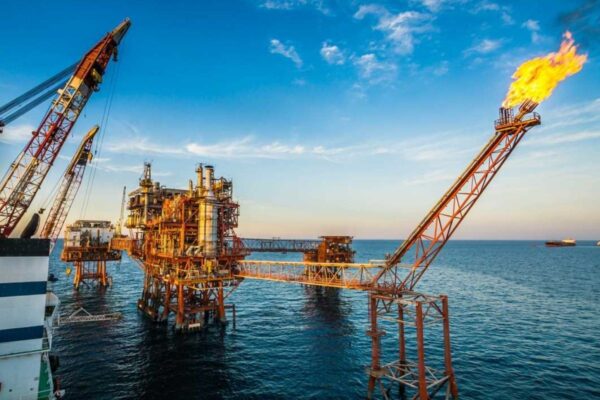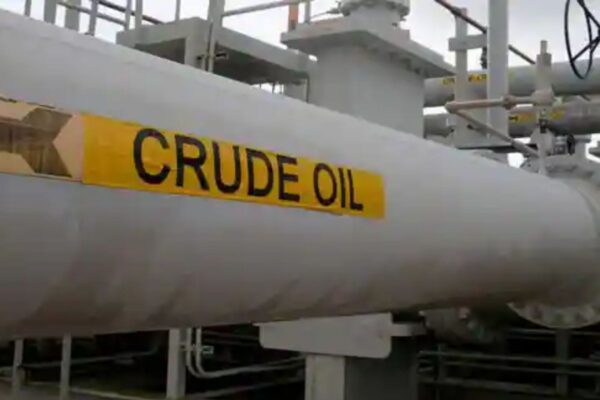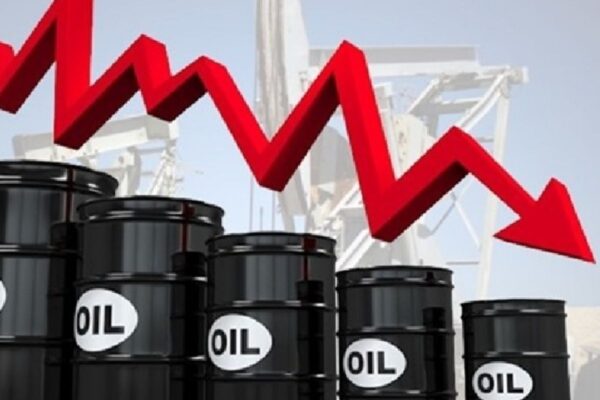ONGC: Why the Share Prices are Declining?

ONGC: Why the Share Prices are Declining?
After the government on Friday imposed special additional excise duty of Rs 23,250 per tonne on crude oil production, shares of state-owned upstream oil and gas companies Oil and Natural Gas Corporation (ONGC) and Oil India fell for the second straight day, falling as much as 6% on the BSE in intraday trade on Monday.
Oil India’s stock has dropped 20% in the last two trading days, while ONGC’s has dropped 18%. The S&P BSE Sensex, in contrast, rose 0.1% over the same period.
To ensure domestic supplies of gasoline, diesel, and aviation turbine fuel (ATF) at a time when exports are becoming very lucrative, the government declared export levies and put limitations on exports.
Similar to this, the government imposed a special additional excise duty (SAED) on the production of crude oil in response to the rapid increase in oil prices.

According to the PTI, which cited two sources with knowledge of the calculations, the tax on crude oil producers like ONGC, Oil India, and Vedanta alone will bring in Rs 69,000 crore per year, taking into account 29.7 million tonnes of oil production in the 2021–22 fiscal year (April 2021–March 2022).
The realizations of ONGC and Oil India were reduced by analysts at Motilal Oswal Financial Services to $60 per barrel for each of the 2Q3FY23 quarters but were left unchanged for the 4QFY23 quarter onward.
Assuming that the realized price and the benchmark will be used to determine the royalty and cess. These two would equal the additional $12/bbl reduction in realization at $100/bbl. Due to this, we reduced the EPS of ONGC and Oil India for FY23E by 29% and 25%, respectively, the brokerage firm stated in its oil & gas sector update.
The brokerage company maintains its BUY recommendation and has updated its target prices for ONGC and Oil India to Rs 171 and Rs 364, respectively. Even if the price of oil falls below $100 per barrel, the windfall tax will continue to be a major danger, the report warned.
“To account for the USD 30–40 per bbl impact of SAED for FY23–24E, we bake in a lower net crude oil price realization for ONGC and OIL of USD 80–70 per bbl (net of the new SAED) vs USD 93–79 per bbl before. In their sector, analysts at HDFC Securities said that it was uncertain how long these levies would last.
We are optimistic that these extra levies would be decreased or removed if inflation is brought under control and/or petroleum product prices decline because we are aware that these levies will be reviewed every 15 days, according to the brokerage business.
Windfall tax leads to a Reduction in ONGC profits

After imposing a windfall tax on oil companies, the government expects to raise $ 12 billion, or 94,800 crores.
Over the current fiscal year, the government would reportedly receive up to USD 12 billion (approximately 94,800 crores) in windfall taxes on domestic crude oil production and fuel exports, while businesses like Reliance Industries Ltd. and ONGC will suffer a reduction in their profits.
On the export of gasoline, diesel, and aviation turbine fuel (ATF), as well as on domestic crude oil production, the government imposed windfall gain taxes. Additionally, it mandates that exporters first meet the demands of their domestic market.
According to Moody’s analysis of the new tariffs, the tax hike will lower the profitability of Indian oil exporters and producers like Reliance Industries Limited (RIL) and Oil and Natural Gas Corporation Ltd (ONGC).
As a result of the government’s declaration, Indian oil companies will now be required to pay 6 per liter (about USD 12.2 per barrel) for the export of gasoline and ATF, and 13 per liter (around USD 26.3 per barrel) for the export of diesel. In addition, upstream producers of crude oil produced in India will be required to pay taxes of 23,250 per tonne (about USD 38.2 per barrel).
“We predict that the government will generate close to USD 12 billion in additional income for the remainder of fiscal 2022 based on India’s production of crude oil and export of petroleum products in the fiscal year that concluded on March 31, 2022 (fiscal 2021),” the rating agency stated.
The additional revenues will partially offset a decrease in the excise taxes on gasoline and diesel that was announced in late May to control spiraling inflation.
The government slashed the excise duty on gasoline and diesel by 8 and 6 respectively in May 2022, which is thought to have resulted in a 1 lakh crore drop in revenue.
We expected that this government action will only be transitory and that taxes will eventually be changed to reflect changing market conditions, like inflation, external balances, and currency depreciation.
“However, the concurrent announcement of additional customs tariffs on imported gold will aid to prevent the current account deficit from getting any worse. The nation’s sizeable foreign exchange reserves continue to be sufficient to prevent any issues with the repayment of external debt notwithstanding the devaluation of the rupee.
The increase in tax payments, according to the rating agency, is not expected to considerably worsen ONGC’s credit quality because its margins will remain strong.
Oil export profits “will likely be greater than the levels from April 2020 to March 2022, even if they will decline due to windfall taxes,” it said. Additionally, if refining margins are maintained at the highs witnessed in April to June this year, oil export profits “will likely be greater than the levels from April 2020 to March 2022.
The increase in taxes may reduce the potential earnings growth for RIL’s exports, but it won’t have a significant impact on its strong credit quality and great liquidity. The biggest exporter of petroleum goods out of India is RIL.
About 41% of the company’s consolidated EBITDA for the fiscal year that ended in March 2022 came from its oil-to-chemicals sector.
The present high oil prices and ONGC’s low cost of production will offset the impact of the increase in taxes on the production of crude oil on the company’s margins, according to Moody’s.
So, what led to ONGC’s downfall?
The Indian government declared on July 1, 2022, that it would tax Indian companies that export gasoline, diesel, and jet fuel.
On petrol and ATF (Aviation Turbine Fuel) exports, a tax of Rs 6 per liter would be applied, while on the export of diesel within the nation, a tax of Rs 13 per liter would be applied.
This action was performed to help India’s gasoline scarcity.
Several parts of India, notably Gujarat, Rajasthan, and Madhya Pradesh, have been without fuel for months due to refineries’ increased exports to Europe and the US in response to the Russia-Ukraine war.
The government then announced the imposition of a windfall tax on companies engaged in the production of oil. A windfall tax is a higher tax levied on the profits of specific corporations.
The government announced that it would impose an additional cess on domestic crude oil production of Rs 23,230 per barrel.
Domestic suppliers have sold crude oil at foreign prices. The increase in realizations has unintentionally helped the producers.
The business’s revenue increased by 37% year over year during the quarter ending in March 2022. Additionally, due to the rise in oil prices, it reported a 10% YoY increase in net profit.
The situation of ONGC Shares
Following the disclosure, the share price of ONGC decreased by more than 13% to Rs 131. The stock has dropped by approximately 16 percent during the past month.
However, the company’s stock has increased 5.8% during the past 12 months.
On March 8, 2022, the company reached a 52-week high of Rs. 194.9, and on August 23, 2021, it reached a 52-week low of Rs. 108.5.
A PE (Price to Earnings) multiple of 3.3 times applies to the company’s current trading price. It is currently trading below the industry average PE of 5.26 times and is hence undervalued.
Overview of ONGC
The largest oil and gas company in India, ONGC contributes over 71% of the country’s domestic production. To create petroleum products like gasoline, diesel, kerosene, naphtha, and cooking gas LPG, downstream firms like IOC, BPCL, HPCL, and MRPL (the last two are ONGC subsidiaries) require crude oil as their primary raw material.

As a firm with internal service capabilities in every aspect of oil and gas exploration, production, and allied oil-field services, ONGC enjoys a special distinction.
This public sector company, which received the Best Employer award, has a committed staff of almost 28,500 professionals who work around the clock in difficult environments.
The main national oil corporation (NOC) of India, Oil and Natural Gas Corporation Limited (ONGC), is a Miniratna Schedule “A” Central Public Sector Enterprise (CPSE) of the Government of India and is managed by the Ministry of Petroleum & Natural Gas.
The foreign division of ONGC and a completely owned subsidiary is called ONGC Videsh Limited.
ONGC Videsh’s main line of work is to look for oil and gas acreages outside of India, which includes oil and gas exploration, development, and production. About 30.3 per cent of the oil and 23.7 per cent of the oil and natural gas produced domestically in India were produced by ONGC Videsh, which also owns participating interests in 35 oil and gas assets across 15 nations.
Only after its parent company ONGC, ONGC Videsh is the second-largest oil corporation in India in terms of reserves and output.
Oil and Natural Gas Commission was transformed into a corporation in 1994, and the Indian government designated it as one of the Navratnas in 1997. It was subsequently granted Maharatna status in the year 2010.
ONGC has achieved numerous milestones in its 60-year glorious journey to fulfilling India’s energy goals. Over the years, ONGC’s path has been a story of conviction, bravery, and dedication. ONGC’s outstanding efforts have led to the transformation of former frontier regions into new hydrocarbon provinces.
In terms of reserves and production, ONGC has expanded from a small beginning to rank among the major E&P businesses in the world. 84 per cent of India’s natural gas is also produced there.
The Government of India and the Ministry of Petroleum and Natural Gas jointly own ONGC.
It is exploring for and exploiting hydrocarbons in 26 sedimentary basins in India. Over 11,000 km of pipes throughout the country are owned and operated by it.
In response to a windfall tax, JPMorgan criticizes ONGC as its shares continue to tumble.
Investors were surprised by the government’s decision to raise the country’s special extra excise fee on crude oil production by $240 per tonne on Friday.
Oil & Natural Gas Corporation (ONGC) shares continued to decline on July 4 after plummeting more than 13% on Friday as a result of brokerage firm JPMorgan India downgrading the stock in response to the new windfall tax.
Investors were surprised on Friday when the government raised the excise tax on the country’s crude oil production by $240 per tonne. Following the recent spike in crude oil prices to levels not seen in eight years, a special tax was implemented.
Because it expected future profit forecasts to be significantly decreased, brokerage firm JPMorgan downgraded the stock’s rating from “buy” to “neutral” and lowered its price goal from Rs. 185 to Rs. 155.
According to the brokerage, the extra tax that has been levied has a considerable detrimental effect on the stock. Analysts believe that the tax will have a substantial financial impact on ONGC because it is a fixed amount rather than an ad valorem tax that is dependent on the corporation’s real sales.
The additional excise duty will eventually result in a $35–$40 per barrel reduction in ONGC’s realizations.
Due to a 23 percent decrease in each of its operating profit forecasts for 2022–2023 and 2023–2024, brokerage Goldman Sachs reduced its price goal for ONGC from Rs 285 to Rs 210.
Nevertheless, the brokerage maintained its “buy” rating on the stock since it expected that in 2023–2024, the company’s free cash flow will rise by 21%, and its dividend yield will be 11%.
Oil falls below $100 as economic worries increase.
Oil was under pressure during Tuesday’s low liquidity session as equities fell and the dollar increased, making commodities priced in that currency less appealing.
Oil futures dropped below $100 a barrel for the first time since May as concerns about a global economic downturn grew.
To just under $98 per barrel, West Texas Intermediate crude futures had a maximum 9.3 percent decline. Oil was under pressure during Tuesday’s low liquidity session as equities fell and the dollar increased, making commodities priced in that currency less appealing.
Petroleum prices could fall below $65 this year in the event of a recession, according to Citigroup Inc. This is a significant decrease from JPMorgan Chase & Co.’s most optimistic prediction of $380 per barrel.
“Crude oil prices have declined as supply shortage worries begin to take a backseat to worry about declining demand, according to Fawad Razaqzada, a market analyst at City Index. A rising number of economists predict that many of the world’s main economies will see negative growth in the upcoming months, which will plunge the US into a recession.”
After discovering incidents over the previous two days, Shanghai initiated extensive Covid testing in nine districts, raising concerns about the revival of demand in one of the world’s top oil consumers. This action merely fueled concerns about a coming recession. The fresh tests may call for more lockdowns because the city reported several infections on Sunday and Monday.
Due to central banks boosting interest rates fast amid growing concerns that the economy may slow down, oil futures prices have decreased over the previous month. Physical barrels cost a lot of money, though.
On Tuesday, the kingdom increased its official selling prices to Asia. In August, the company’s famed Arab Light crude will cost $9.30, or $2.80, more than is customary in the area.
Although there is pressure on futures due to the possibility of a global economic slowdown, key market time spreads are still firm, indicating that there is a high demand for supplies shortly. That strength has recently grown due to a strike in Norway and an interruption in Libya’s supply.
edited and proofread by nikita sharma




